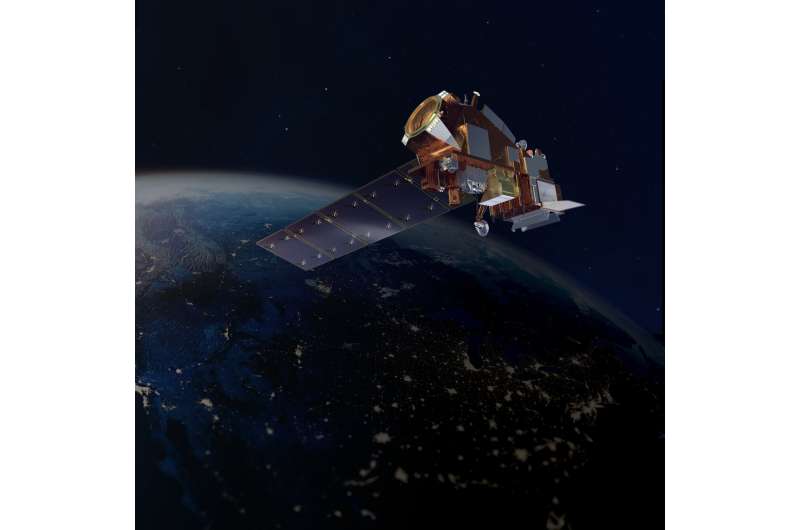NASA eyes November for launch of NOAA's JPSS-2

NASA and the National Oceanic and Atmospheric Administration (NOAA) are now targeting Nov. 1, 2022, as the new launch date for NOAA's Joint Polar Satellite System-2 (JPSS-2) satellite mission. During recent tests of a key instrument designed to collect visible and infrared images, the team found and corrected an issue, which resulted in additional time needed to complete thermal vacuum testing.
The Visible Infrared Imaging Radiometer Suite instrument, or VIIRS, experienced a test equipment issue during thermal vacuum testing. Engineers determined the issue was the result of the movement of test equipment caused by temperature fluctuations during the test. After modifying the test set up, the team retested the system, and it demonstrated excellent performance.
JPSS-2, the third satellite in the Joint Polar Satellite System series, is scheduled to lift off from the Vandenberg Space Force Base in California, on a United Launch Alliance (ULA) Atlas V rocket. The satellite, to be renamed NOAA-21 upon successfully reaching orbit, will continue the work of its predecessors NOAA-20 (formerly JPSS-1) and the NOAA-NASA Suomi National Polar-orbiting Partnership (Suomi-NPP). NASA's Launch Services Program (LSP), based at Kennedy Space Center, is managing the launch.
JPSS-2 will scan the globe as it orbits from the North to the South Pole, crossing the equator 14 times a day. From 512 miles above Earth, it will capture data that inform weather forecasts, extreme weather events, and climate change. VIIRS collects imagery for global observations of the land, atmosphere, cryosphere, and oceans.
Launching as a secondary payload to JPSS-2 is NASA's Low-Earth Orbit Flight Test of an Inflatable Decelerator (LOFTID), dedicated to the memory of Bernard Kutter. LOFTID is a demonstration of a hypersonic inflatable aerodynamic decelerator, or aeroshell, technology that could one day help land humans on Mars.
Together, NOAA and NASA oversee the development, launch, testing, and operation of all the satellites in the JPSS program. NOAA funds and manages the program, operations, and data products. On behalf of NOAA, NASA develops and builds the instruments, spacecraft, and ground system, and launches the satellites, which NOAA operates.
Provided by NASA's Goddard Space Flight Center





















